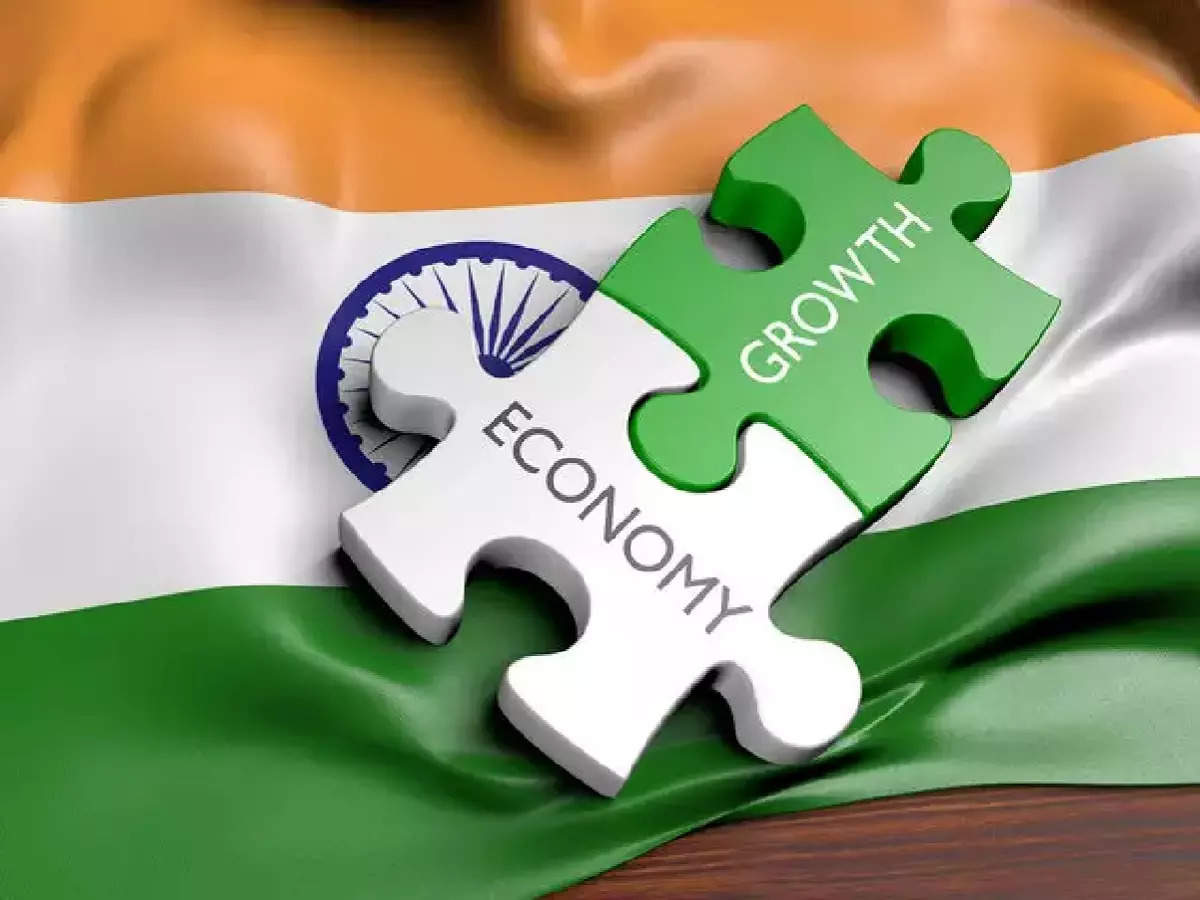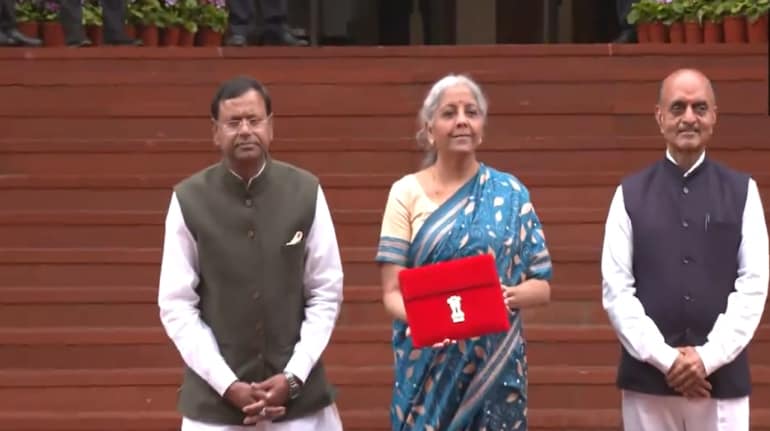The market extended gains for the third consecutive session on May 29, with the Nifty50 climbing to the highest level of the current calendar year. Banking and financial services, auto, FMCG and metal stocks supported benchmark indices. The BSE Sensex rallied 345 points to 62,846, while the Nifty50 jumped 99 points to 18,599 and formed a Doji kind of candlestick pattern on the daily charts, indicating indecisiveness among buyers and sellers about future trends, especially after a significant rally in the last few sessions. "The Nifty experienced a relatively stable trading session, after opening with an upside gap. However, it managed to break out of its consolidation phase, indicating a potential shift in market direction," Rupak De, Senior Technical at LKP Securities said. He further said there was an increase in Call writing activity at the 18,800 level, suggesting a resistance zone, while Put writing was observed at the 18,600 level, indicating a potential support zone in the near term. Furthermore, the 18,500 level is expected to act as a significant support level for the index. These observations suggest that the market may remain within a defined range with a bullish undertone in the coming days, De said. On the broader markets front, the Nifty Midcap 100 and Smallcap 100 indices underperformed frontliners, rising 0.4 percent and 0.3 percent respectively. We have collated 15 data points to help you spot profitable trades: Note: The open interest (OI) and volume data of stocks in this article are the aggregates of three-month data and not just the current month. Key support, resistance levels on Nifty As per pivot charts, the Nifty may get support at 18,584, followed by 18,570 and 18,547. If the index advances, 18,630 would be the key resistance level to watch out for followed by 18,644 and 18,667. Nifty Bank The Bank Nifty performed better than broader markets as well as Nifty50, climbing over the 44,000 mark. The index was up 294 points at 44,312 and formed a Doji sort of candlestick pattern on the daily scale. "The index successfully surpassed the immediate hurdle of 44,000, indicating the strength of the bullish trend. The next resistance level on the upside is now identified at 45,000," Kunal Shah, Senior Technical & Derivative Analyst at LKP Securities said. In terms of options data, he said the highest open interest for Put options is observed at 43,500, suggesting that traders have significant interest in that strike price as a potential support level. On the other hand, the highest open interest for Call options was seen at 45,000, indicating that traders anticipate potential resistance at that level, he added. As per the pivot point calculator, the Bank Nifty is expected to take support at 44,219, followed by 44,151 and 44,040. The key resistance level to watch out for would be 44,440, followed by 44,509, and 44,619. Call options data On the weekly options front, the maximum Call open interest (OI) was at 18,800 strike, with 92.14 lakh contracts, which is expected to be a crucial resistance level for the Nifty. This was followed by 18,700 strike comprising 85.65 lakh contracts and 19,000 strike with more than 83.54 lakh contracts. The meaningful Call writing was seen at 18,800 strike, which added 36.65 lakh contracts, followed by 18,600 strike, which added 23.34 lakh contracts, and 18,700 strike, which added 20.86 lakh contracts. The meaningful Call unwinding was at 18,500 strike, which shed 30.22 lakh contracts, followed by 18,400 strike, which shed 18.82 lakh contracts, and 18,300 strike, which shed 6.85 lakh contracts. Put option data On the Put side, the maximum open interest was at 18,300 strike, with 1.07 crore contracts, which is expected to be an important support in the coming sessions. This was followed by the 18,400 strike, comprising 94.53 lakh contracts, and the 18,000 strike with 89.49 lakh contracts. We have seen Put writing at 18,600 strike, which added 46.70 lakh contracts, followed by 18,500 strike, which added 31.98 lakh contracts, and 18,000 strike that added 28.88 lakh contracts. Put unwinding was seen at 17,800 strike, which shed 22.12 lakh contracts, followed by 18,100 strike, which shed 9.66 lakh contracts, and 17,700 strike which shed 5.89 lakh contracts. Stocks with high delivery percentage A high delivery percentage suggests that investors are showing interest in the stock. The highest delivery was seen in Ramco Cements, United Breweries, United Spirits, Bharti Airtel, and PI Industries among others. 87 stocks see a long build-up An increase in open interest (OI) and price typically indicates a build-up of long positions. Based on the OI percentage, 87 stocks, including Astral, Lupin, Indiabulls Housing Finance, Titan Company and National Aluminium Company, saw long build-ups. 22 stocks see long unwinding A decline in OI and price generally indicates a long unwinding. Based on the OI percentage, 22 stocks, including ONGC, Maruti Suzuki, Siemens, Oberoi Realty and Godrej Consumer Products, saw long unwinding. 28 stocks see a short build-up An increase in OI along with a price decrease indicates a build-up of short positions. Based on the OI percentage, 28 stocks, including City Union Bank, Bosch, Balkrishna Industries, GMR Airports Infrastructure and Hindustan Aeronautics saw a short build-up. 52 stocks see short-covering A decrease in OI along with a price increase is an indication of short-covering. Based on the OI percentage, 52 stocks were on the short-covering list. These included Chambal Fertilizers, ICICI Lombard General Insurance, SAIL, Dabur India, and Max Financial Services. Bulk deals Clean Science & Technology: Think India Opportunities Master Fund LP bought 8.82 lakh equity shares in the company via open market transactions at an average price of Rs 1,406 per share. However, promoters - Nilima Krishnakumar Boob sold 8.78 lakh shares in the company at an average price of Rs 1,406.64 per share, Asha Ashok Boob offloaded 18.65 lakh shares at an average price of Rs 1,407.22 per share, and Asha Ashok Sikchi sold 9.84 lakh shares at an average price of Rs 1,406 per share. Gravita India: Promoter Rajat Agrawal has offloaded 32 lakh shares or 4.63 percent stake in the company via open market transaction at an average price of Rs 565 per share. However, Employees Provident Fund Board Managed by Nomura Asset Management Malaysia SDN BHD bought 5.5 lakh shares, The Nomura Trust and Banking Co Ltd as the trustee of Nomura India Stock purchased 7.5 lakh shares, The MTBJ A/C Nomura India Inves FD purchased 15 lakh shares, and Nomura Funds Ireland Public Limited Company- Nomura Funds Ireland - India Equity Fund bought 4 lakh shares, at an average price of Rs 565 per share. (For more bulk deals, click here) Results on May 30 Adani Ports and Special Economic Zone, Mankind Pharma, Torrent Pharmaceuticals, Action Construction Equipment, Aegis Logistics, Apollo Hospitals Enterprise, Astrazeneca Pharma India, Bajaj Healthcare, Birla Tyres, Gujarat Mineral Development Corporation, Graphite India, Greenply Industries, Heranba Industries, Indiabulls Real Estate, Insecticides (India), KRBL, Lemon Tree Hotels, Lumax Auto Technologies, Lux Industries, Marksans Pharma, Mazagon Dock Shipbuilders, Panacea Biotec, Patanjali Foods, PC Jeweller, Peninsula Land, Prestige Estates Projects, Rashtriya Chemicals & Fertilizers, Reliance Infrastructure, Suzlon Energy, Uflex, Vakrangee, V-Guard Industries, Vivimed Labs, and Welspun Corp will be in focus ahead of quarterly earnings on May 30. Stocks in the news Reliance Industries: NBC Universal (NBCU) and JioCinema, Viacom18’s streaming service, have entered into a multi-year partnership to offer films and TV series in India. Under the partnership, the over-the-top (OTT) platform will stream Comcast NBCUniversal’s production entities and brands. The deal will give JioCinema's premium subscribers access to popular Hollywood shows. JioCinema is the streaming platform run by Reliance Industries. Rail Vikas Nigam: The state-owned railway company has recorded a 5 percent year-on-year decline in consolidated profit at Rs 359 crore for the quarter ended March FY23, impacted by lower topline. Consolidated revenue from operations dropped 11.1 percent to Rs 5,720 crore compared to the corresponding period last fiscal, but the operating profit margin was better due to lower operating expenses. Torrent Power: The power utility has registered a consolidated profit of Rs 449 crore for the quarter ended March FY23, against a loss of Rs 488 crore in the year-ago period. Profit in Q4FY23 was boosted by healthy revenue growth, while loss in Q4FY22 was due to a one-time loss of Rs 1,300 crore. Revenue from operations grew by 61.3 percent to Rs 6,038 crore compared to the corresponding period last fiscal. Sobha: The south-based real estate company has reported a massive 242 percent year-on-year growth in consolidated profit at Rs 48.6 crore for the March FY23 quarter despite weak operating margin, driven by healthy topline growth. Revenue from operations surged 70.3 percent to Rs 1,210 crore compared to the corresponding period last year, with consistently higher sales, the highest-ever collections and healthy customer deliveries. The board recommended a dividend of Rs 3 per share for FY23. NBCC (India): The public sector enterprise has registered a whopping 206 percent year-on-year growth in consolidated profit at Rs 108.4 crore for the fourth quarter of FY23, driven by healthy operating performance. Consolidated revenue from operations for the quarter stood at Rs 2,790 crore, increasing 14.3 percent over a year-ago period. Jubilant Pharmova: The pharma company has posted a consolidated loss of Rs 97.8 crore for the quarter ended March FY23, against a profit of Rs 59.5 crore in the same period last year. The profitability was impacted by dismal operating numbers with a significant rise in depreciation, higher inventory, and input cost. Revenue from operations grew by 9.7 percent to Rs 1,661 crore compared to the corresponding period last fiscal. ISGEC Heavy Engineering: The engineering company has reported consolidated profit at Rs 86.13 crore for the fourth quarter of the last financial year 2022-23, growing 129 percent over the corresponding period last fiscal, driven by healthy topline as well as operating numbers. Revenue from operations for the quarter stood at Rs 2,043 crore, increasing 28 percent over the year-ago period. The board recommended a dividend of Rs 3 per share for FY23. Fund Flow FII and DII data Foreign institutional investors (FIIs) bought shares worth Rs 1,758.16 crore, while domestic institutional investors (DIIs) purchased shares worth Rs 853.57 crore on May 29, provisional data from the National Stock Exchange shows. Stocks under F&O ban on NSE The National Stock Exchange has not added any stock to its F&O ban list for May 30. Disclaimer: The views and investment tips expressed by experts on Moneycontrol are their own and not those of the website or its management. Moneycontrol advises users to check with certified experts before taking any investment decisions. Disclaimer: MoneyControl is a part of the Network18 group. Network18 is controlled by Independent Media Trust, of which Reliance Industries is the sole beneficiary.
Adblock test (Why?)
Trade setup for Tuesday: Top 15 things to know before the opening bell - Moneycontrol
Read More

















